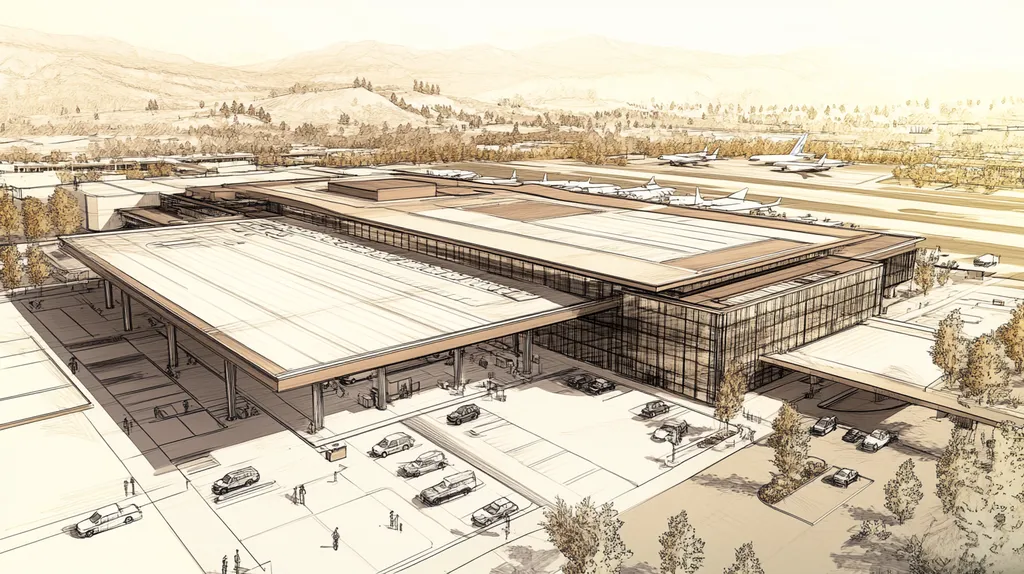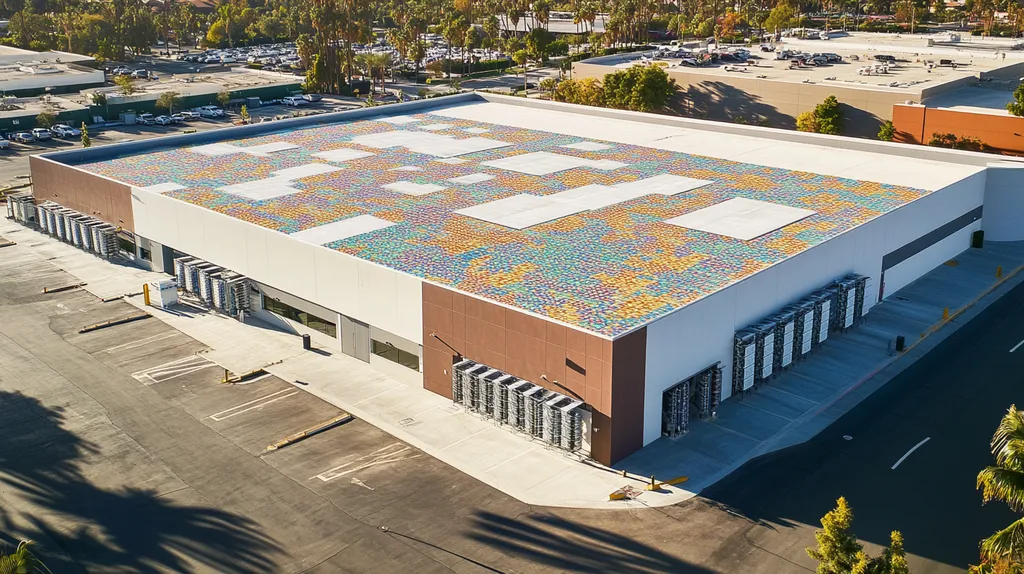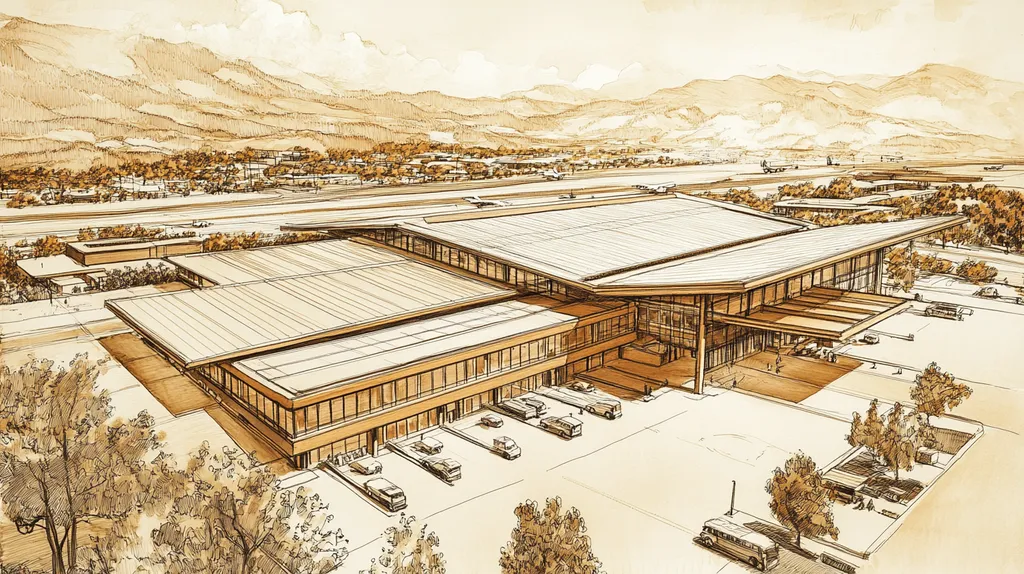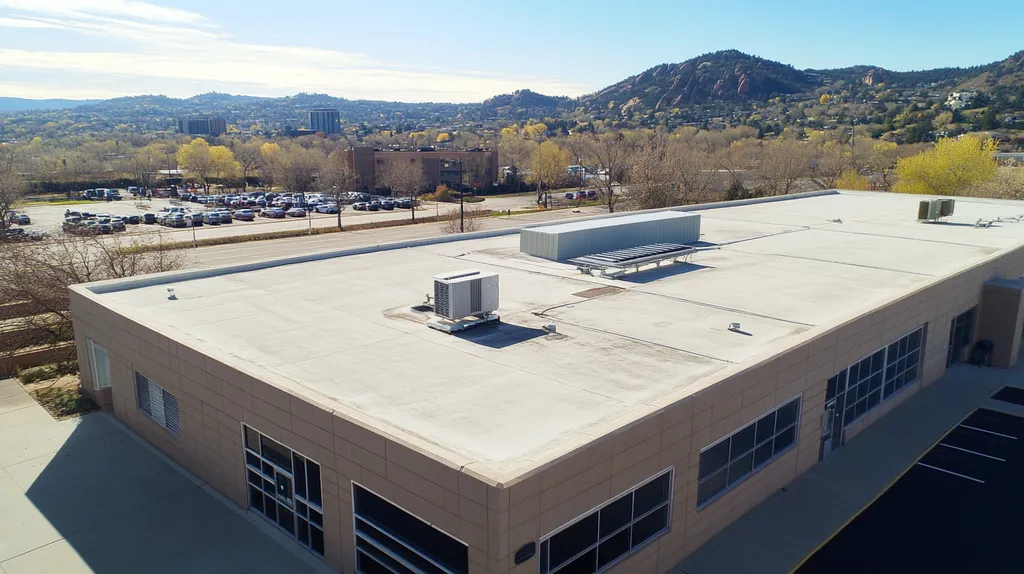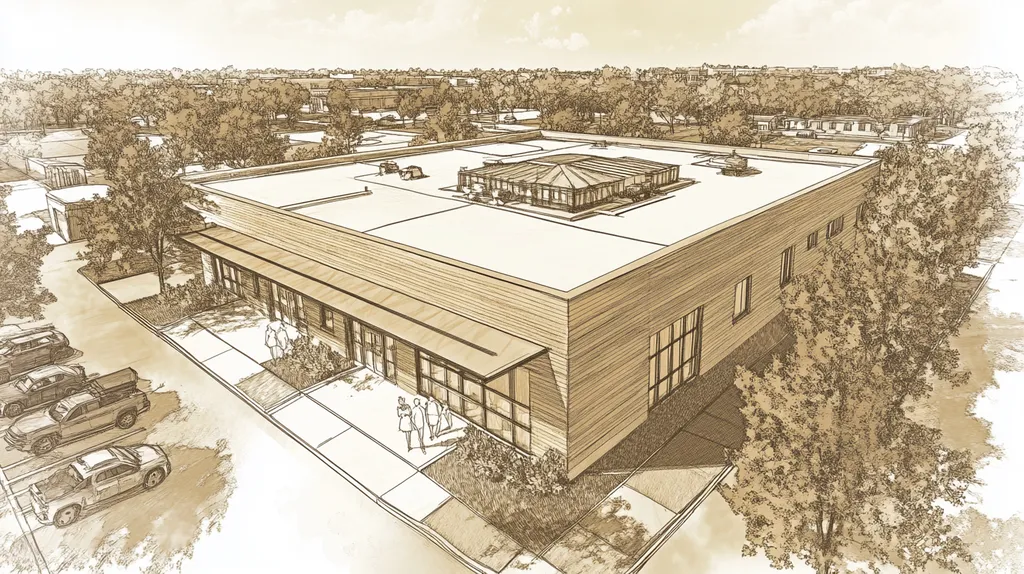Welcome to today’s Battle Royale featuring two roofing heavyweights: “Cool Roofing” in the east corner versus “Green Roofing” in the west!
Tonight’s showdown pits these contenders against each other across six punishing rounds designed to test every aspect of their performance for Climate Impact on Commercial Roof Performance.
At stake? Millions in potential costs, decades of building protection, and the critical performance demands of modern commercial and industrial facilities.
Our professional judging panel will evaluate each round on technical merit, real-world performance, and value delivery. After all six rounds, we’ll declare our ultimate champion.
Ladies and gentlemen, facility managers and building owners… it’s time to rumble!
ROUND 1: INITIAL COSTS & INSTALLATION
When selecting between cool and green roofing systems, the initial investment sets the foundation for long-term performance and return on investment. With commercial roofing costs ranging from $5 to $50 per square foot, making the wrong choice can lead to hundreds of thousands in unnecessary expenses and reduced building efficiency.
Material Expenses
The surface temperature differences between conventional and green roofs can reach up to 56°F, making material selection crucial for building performance. Green roofs incorporate multiple specialized layers including waterproofing membranes, root barriers, drainage systems, growing medium, and carefully selected vegetation. (source: U.S. EPA)
Cool roofing materials typically consist of highly reflective surfaces like thermoplastic polyolefin (TPO) or polyvinyl chloride (PVC) membranes. These materials are widely available and manufactured in standardized formats, helping control costs.
While both options command premium prices compared to traditional roofing, green roofing materials cost 30-50% more than cool roofing alternatives due to their complex layering requirements and specialized components.
Installation Complexity
Cool roofing installation follows established procedures similar to traditional commercial roofing. Most contractors are familiar with the techniques, requiring minimal additional training or specialized equipment.
Green roof installation demands extensive expertise in both roofing and horticulture. The process requires careful coordination between multiple specialized trades and often necessitates structural reinforcement to support the additional weight.
The technical demands of green roof installation typically result in a smaller pool of qualified contractors and higher labor costs, giving cool roofing a clear advantage in installation simplicity.
Project Timeline
Cool roofing projects generally proceed at a pace similar to traditional commercial roofing installations. Weather permitting, crews can complete large sections daily, minimizing business disruption.
Green roof installations involve multiple phases that must be carefully sequenced. Each layer requires proper curing time, and vegetation establishment can extend the timeline by weeks or months.
The extended duration of green roof installations increases exposure to weather delays and coordination challenges. Cool roofing’s faster completion timeline provides a significant advantage for businesses seeking to minimize operational disruptions.
ROUND 1 WINNER: COOL ROOFING
ROUND 2: DURABILITY & LIFESPAN
When it comes to commercial roofing, durability and lifespan directly impact the bottom line. A failing roof can lead to structural damage, inventory losses, and business interruptions that cost facility owners millions annually. With commercial buildings facing increasingly extreme weather patterns, choosing between cool and green roofing systems has never been more critical.
Weather Resistance
Cool roofing systems rely on reflective surfaces and specialized coatings to manage heat loads. While effective in moderate climates, these surfaces can deteriorate more rapidly when exposed to extreme temperature fluctuations, UV radiation, and severe weather events.
The surface temperature of green roofs can be 56°F lower than conventional roofs, dramatically reducing thermal stress on roofing materials. Their multiple protective layers and vegetation shield the waterproofing membrane from UV damage and temperature extremes. (source: U.S. EPA)
In terms of weather resistance, green roofing systems demonstrate clear superiority by providing natural protection against environmental stressors.
Structural Integrity
Cool roofing materials typically maintain their structural integrity for 15-20 years under optimal conditions. However, their effectiveness can decline significantly as reflective coatings wear down, leading to increased heat absorption and accelerated degradation.
Green roofing systems commonly last 40-50 years when properly maintained. Their layered construction provides redundant waterproofing protection, while the growing medium acts as ballast against wind uplift.
The substantial difference in expected lifespan gives green roofing a decisive advantage in structural longevity.
Maintenance Requirements
Cool roofs require regular inspections and recoating to maintain their reflective properties. Surface contamination from pollution, algae growth, and weathering can significantly reduce their performance over time.
Green roofs need consistent plant maintenance and occasional irrigation, particularly during establishment. However, their natural regenerative capabilities and self-healing properties reduce the frequency of major repairs.
While both systems demand ongoing maintenance, green roofs offer more sustainable long-term performance with fewer structural interventions.
ROUND 2 WINNER: Green Roofing
ROUND 3: PERFORMANCE FACTORS
As extreme weather events intensify and energy costs soar, choosing the right commercial roofing system has become a critical business decision. Today’s roofing solutions must deliver exceptional thermal performance while adapting to increasingly unpredictable climate patterns. The stakes are particularly high in urban areas, where roofing choices directly impact both building efficiency and environmental resilience.
Energy Efficiency
Energy costs represent one of the largest operational expenses for commercial buildings, with roofing systems playing a pivotal role in thermal management. Cool roofing systems excel at reflecting solar radiation, reducing cooling loads during peak summer conditions.
Green roofs provide natural insulation through their growing medium and vegetation layers, regulating both heating and cooling demands throughout the year. Their surface temperatures can be up to 56°F lower than conventional roofs, dramatically reducing cooling requirements and improving indoor comfort. (source: U.S. EPA)
While both systems offer significant energy savings, green roofs provide more comprehensive year-round benefits through their natural temperature regulation capabilities.
ADVANTAGE: Green Roofing
Weather Resilience
Cool roofing systems rely on specialized coatings and reflective surfaces to manage thermal loads. These materials can degrade over time when exposed to severe weather conditions, potentially compromising their performance.
Green roofs naturally adapt to changing weather patterns through their living components. Their multiple layers provide enhanced protection against extreme temperatures, heavy rainfall, and UV exposure.
The self-regulating nature of green roofs gives them superior resilience against varying weather conditions, while cool roofs may require more frequent maintenance to maintain optimal performance.
ADVANTAGE: Green Roofing
Operational Flexibility
Cool roofing systems offer straightforward maintenance requirements and can be easily inspected for damage. Their uniform surface allows for quick repairs and simple modifications when needed.
Green roofs require specialized maintenance expertise and careful monitoring of vegetation health. However, they provide additional functional benefits like stormwater management and biodiversity support.
While green roofs offer more diverse benefits, cool roofs provide greater operational flexibility and easier access for routine maintenance and modifications.
ADVANTAGE: Cool Roofing
ROUND 3 WINNER: Green Roofing
ROUND 4: MAINTENANCE REQUIREMENTS
In the demanding world of commercial roofing, maintenance requirements can make or break a building’s operational budget. Studies show that proper maintenance can extend a roof’s lifespan by up to 50%, while neglect can lead to premature failure and costly replacements. The stakes are particularly high for large commercial facilities, where roof maintenance issues can disrupt operations and impact both employee comfort and energy efficiency.
Routine Inspection Requirements
Cool roofing systems demand quarterly inspections to maintain their reflective properties and ensure optimal performance. These inspections focus primarily on surface cleanliness, coating integrity, and seam conditions.
The maintenance program typically includes pressure washing to remove debris and contaminants that can reduce reflectivity. Special attention must be paid to areas where ponding water might compromise the roof’s reflective qualities.
Green roofing systems require monthly inspections during growing seasons to monitor plant health, drainage systems, and substrate condition. These inspections must be performed by specialists with both horticultural and roofing expertise.
The more frequent and specialized nature of green roof inspections results in higher ongoing costs and complexity, giving cool roofing an ADVANTAGE in this category.
Preventive Maintenance Protocols
Cool roofs benefit from straightforward maintenance protocols that most facility teams can manage internally. Regular cleaning and occasional recoating represent the primary maintenance tasks, with minimal specialized equipment required.
Repairs to cool roofing systems typically involve simple procedures like patching or reapplying reflective coatings. These tasks can usually be completed quickly with minimal disruption to building operations.
Green roofs demand continuous attention to irrigation systems, fertilization schedules, and weed control. The living components require regular trimming, replanting, and careful monitoring of soil chemistry.
The complexity and frequency of green roof maintenance protocols gives cool roofing a clear ADVANTAGE in this category.
Long-term Care Requirements
Cool roofing systems maintain their performance through relatively simple long-term care strategies. Most issues can be addressed through standard roofing repair techniques familiar to maintenance staff.
The primary long-term consideration for cool roofs involves periodic recoating to maintain reflective properties. This process is predictable and can be easily budgeted into maintenance plans.
Green roofs require ongoing ecosystem management and may need periodic soil replacement or vegetation updates. Their living components demand constant attention to maintain proper function and appearance.
The more predictable and manageable nature of cool roof care requirements earns them an ADVANTAGE in this category.
ROUND 4 WINNER: COOL ROOFING
ROUND 5: SUSTAINABILITY CREDENTIALS
With rising energy costs and stricter environmental regulations, commercial building owners face mounting pressure to maximize roofing sustainability. Recent studies show that roofing choices can impact building energy consumption by up to 30% while significantly affecting urban heat island effects. Understanding the sustainability credentials of different roofing systems has become essential for long-term facility planning and environmental compliance.
Environmental Impact Assessment
Cool roofing systems utilize highly reflective materials to reduce heat absorption and lower cooling demands. Their synthetic materials require significant energy during production but can be partially recycled at end-of-life.
Green roofs provide natural carbon sequestration and support local biodiversity through their living components. Their surface temperatures can be up to 56°F lower than conventional roofs, dramatically reducing urban heat island effects and improving air quality. (source: U.S. EPA)
The comprehensive environmental benefits of green roofs, including improved air quality and biodiversity support, give them a clear advantage in this category.
ADVANTAGE: Green Roofing
Energy Performance
Cool roofing systems excel at reflecting solar radiation, providing immediate reductions in cooling costs during peak summer conditions. Their performance can decline over time as surfaces accumulate dirt and wear.
Green roofs offer year-round thermal regulation through natural insulation and evaporative cooling. Their growing medium and vegetation provide consistent temperature control regardless of surface conditions.
While both systems reduce energy consumption, green roofs provide more consistent performance across all seasons.
ADVANTAGE: Green Roofing
Resource Management
Cool roofing materials typically require periodic recoating to maintain reflective properties. Their simplified composition allows for straightforward recycling when replacement becomes necessary.
Green roofs naturally filter and retain stormwater, reducing municipal system loads. Their self-regenerating vegetation requires minimal resource input once established.
The superior stormwater management and reduced resource requirements of green roofs provide significant long-term advantages.
ADVANTAGE: Green Roofing
ROUND 5 WINNER: GREEN ROOFING
ROUND 6: SPECIALIZED APPLICATIONS
As extreme weather patterns intensify and energy costs surge, specialized roofing applications have become critical decision points for facility managers. Different building types face unique challenges that can make or break roofing performance. With cooling costs representing up to 40% of commercial building energy consumption, choosing the wrong roofing system for specialized applications can lead to substantial operational losses.
Commercial Complexes
Modern commercial complexes demand roofing solutions that can handle high foot traffic, rooftop equipment, and varying occupancy patterns. These buildings often operate extended hours, making energy efficiency and comfort paramount considerations.
Cool roofing systems reduce surface temperatures by up to 50°F, delivering energy savings of 10% to 20% in air conditioning costs for buildings in warm climates. Their durability under frequent maintenance traffic and ability to accommodate rooftop equipment make them particularly suitable for commercial applications. (source: Environment + Energy Leader)
Green roofs offer excellent thermal performance but may require restricted access areas and careful planning around mechanical equipment. Their weight considerations can also limit flexibility for future rooftop modifications.
ADVANTAGE: Cool Roofing
Industrial Facilities
Industrial buildings face unique challenges including high internal heat loads, chemical exposure, and frequent mechanical access requirements. These facilities often operate 24/7, making operational disruptions especially costly.
Cool roofing systems provide excellent resistance to industrial pollutants and can be easily cleaned to maintain reflective properties. Their lightweight nature rarely requires structural modifications, and repairs can be completed quickly to minimize disruptions.
Green roofs struggle in industrial environments where air pollutants and chemical exposure can damage vegetation. Their higher maintenance requirements and limited accessibility for equipment repairs make them less practical for industrial applications.
ADVANTAGE: Cool Roofing
Urban Developments
Urban buildings must address multiple challenges including heat island effects, stormwater management, and stringent environmental regulations. These properties often serve as showcase examples of sustainable development.
Cool roofing provides immediate temperature reductions but offers limited additional environmental benefits. Their performance can degrade over time as urban pollution accumulates on reflective surfaces.
Green roofs excel in urban settings by providing multiple environmental benefits including stormwater retention, air quality improvement, and biodiversity support. Their natural cooling properties maintain effectiveness regardless of surface contamination.
ADVANTAGE: Green Roofing
ROUND 6 WINNER: COOL ROOFING
AND THE WINNER IS…
After six punishing rounds of technical analysis, with both contenders trading powerful blows across durability, maintenance, and specialized applications, we have our champion by a split decision…GREEN ROOFING!
The victor dominated three crucial rounds – Durability & Lifespan, Performance Factors, and Sustainability Credentials – demonstrating superior weather resistance, comprehensive thermal regulation, and unmatched environmental benefits. Those natural cooling properties and 40-50 year lifespans proved too powerful to overcome!
But don’t count Cool Roofing out! This formidable challenger showed impressive strength in Initial Costs, Maintenance Requirements, and Specialized Applications. For industrial facilities or buildings requiring frequent rooftop access, Cool Roofing remains a compelling choice.
IMPORTANT NOTICE: Every building faces unique challenges based on location, usage patterns, and structural characteristics. Local climate conditions, municipal regulations, and specific property requirements can significantly impact roofing performance. This analysis provides general guidance but cannot account for all variables. Always consult qualified roofing professionals who can evaluate your specific situation before making final decisions.
Ladies and gentlemen, in the high-stakes world of commercial roofing, there’s no substitute for matching your building’s unique requirements with the right system’s strengths. Choose your champion wisely – your facility’s future depends on it!
FREQUENTLY ASKED QUESTIONS
Q. What are the initial costs of a commercial roof?
A. Initial costs vary between cool and green roofing systems. Cool roofing typically ranges from $5 to $50 per square foot, while green roofing can be 30-50% more expensive due to its complex material layers. Choosing the right option is crucial to avoid unnecessary expenses.
Q. How does the durability of an industrial roof compare?
A. Durability varies greatly between options. Green roofs typically last 40-50 years with proper maintenance, while cool roofs generally last 15-20 years. Extreme weather conditions can affect performance, so selecting the right system is vital to maximize lifespan.
Q. Which commercial roof offers better energy efficiency?
A. Green roofs excel in energy efficiency by providing natural insulation through vegetation. They can maintain lower surface temperatures compared to cool roofs, leading to reduced heating and cooling costs year-round. This makes them an advantageous choice for energy savings.
Q. What are the maintenance requirements for a commercial roof?
A. Cool roofing systems usually require quarterly inspections and simple maintenance tasks. In contrast, green roofs demand more frequent and specialized inspections to ensure plant health and drainage. The complexity of green roofs leads to higher ongoing maintenance costs.
Q. How do sustainability credentials of roofing systems differ?
A. Green roofs offer substantial sustainability benefits, including carbon sequestration and support for biodiversity. In contrast, cool roofs focus on heat reflection but have limited ecological benefits. Evaluating sustainability is essential for long-term facility planning and compliance.
Q. For what specialized applications is a commercial roof best suited?
A. Cool roofing is better suited for commercial complexes and industrial facilities due to its durability and maintenance ease. Green roofs excel in urban developments by improving stormwater management and air quality, making them ideal for environmentally-focused projects.
Q. Can cool roofing systems provide additional environmental benefits?
A. While cool roofing systems primarily focus on thermal benefits, they can help minimize heat absorption in warmer climates. However, they do not offer the same range of environmental enhancements as green roofs do, such as fostering biodiversity or improving air quality.

